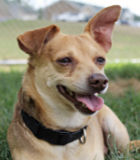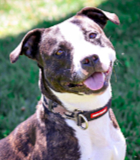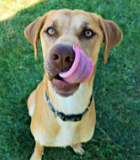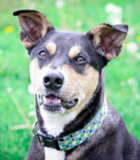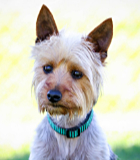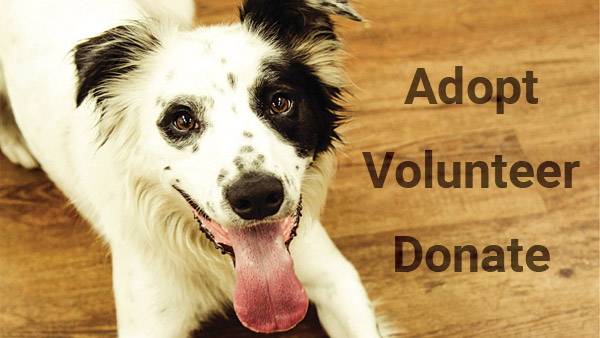Teaching Your Dog to Wait at Doors
- This topic has 0 replies, 1 voice, and was last updated 13 years, 10 months ago by
Mackenzie’s Admin.
-
AuthorPosts
-
June 17, 2010 at 5:20 pm #542
Mackenzie’s Admin
MemberExcited to explore the great outdoors, many dogs leap out of cars and dash through doors as soon as they’re given an opportunity to do so. This kind of behavior can be very dangerous—even deadly if your dog rushes out into the path of oncoming traffic. So teaching her to wait politely for your permission to go through doors won’t only make your life easier; it will keep her safe.
Basic Training Steps
When you’re ready to start training, cut some soft treats into bite-sized pieces. Then take the treats and your dog to a closed door between two rooms in your house. (Choose a door that swings toward you when it closes.) Don’t put a leash on your dog during this initial stage of training. If you do, you’ll be tempted to hold her back with the leash when she tries to move ahead of you through the door. Using a leash to restrain her might teach her that you’re stronger than she is, but it won’t teach her to wait at doors. Also avoid blocking the doorway with your body or standing in front of your dog. You want her to learn that she can go through the door—but she shouldn’t unless you give her permission.1. Stand in front of the door with your dog beside you. Say “Wait.” Then show your dog a hand signal—your open palm right in front of her face.
2. Start to slowly open the door. When your dog moves forward, even just a tiny bit, quickly close the door, preventing her from going through it. (It’s okay if you gently bump your dog on the nose with the door, but be careful not to hurt or scare her.) Good timing is important, so be sure to close the door the instant you see your dog start to move forward.
3. When the door swings toward your dog, she’ll likely step back into position beside you. When she does, start to slowly open the door again. Continue to quickly close the door when your dog moves forward until she stays put for a couple of seconds with the door open about a foot. When this happens, say “Yes!” and immediately give your dog a treat.
4. Then say “Okay” to let your dog know her job is done, open the door all the way, and walk through the doorway with your dog. (Be sure to say “Okay” before you move through the doorway. You want your verbal cue to release your dog from the Wait—not your body movement.)
5. Restart the exercise from the beginning.Repeat the steps above 10 to 15 times. Practice this exercise for a few days, aiming for two to five short practice sessions per day. (Each session should last only 5 to 10 minutes.) When your dog waits without making a mistake for two training sessions in a row, you can move on to the next stage of training.
Expanding Your Dog’s New Skill
Now that your dog is getting the hang of it, you can make her job a little harder. Repeat the exercise above, gradually increasing the time your dog must wait and how wide you open the door.Teach Your Dog to Wait Longer
Say “Wait,” and give your dog the hand signal.
Slowly open the door, just like you did before, until it’s open about a foot.
Instead of requiring your dog to wait for only a couple of seconds, ask her to wait for four seconds. If she moves forward, close the door. When she moves back, you try opening the door again.
When your dog waits without moving forward for four seconds, say “Yes!” and give her a treat.
Say “Okay,” and then walk though the doorway with your dog.
Repeat the steps above for a few days, gradually increasing the time that you ask your dog to wait. As you increase the time, randomly throw in some easy, short repetitions to keep your dog interested in training. Start with four seconds, and then increase to five. Try eight seconds, and then go back to five. Increase to 10 seconds, then 12, and then an easy five again. When you build up to about 15 seconds of waiting, you can proceed to the nextstage: opening the door wider.
Open the Door Wider
Say “Wait,” and give your dog the hand signal.
Slowly open the door, just like you did before, but this time, open it about two feet.
Count to two in your head. If your dog moves forward, close the door. When she moves back, try opening the door again.
When your dog waits without moving forward for two seconds with the door open two feet, say “Yes!” and give her a treat.
Say “Okay,” and then walk though the door with your dog.
Repeat the steps above for a few days, gradually opening the door wider and wider. To set your dog up to succeed, progress in small steps. Start with the door open two feet wide, and then increase to three. Try holding the door halfway open. Then try opening the door all the way. Always be ready to close the door quickly if your dog makes a mistake and tries to move though it before you say “Okay.” When your dog waits without making a mistake for two training sessions in a row, you can move on to the next training stage.Put It All Together
Now that you’ve worked on increasing the time your dog waits and how much you open the door separately, it’s time to put these two things together. Repeat the exercise above with the door held all the way open, gradually increasing the time you ask your dog to wait. Practice for a week or so, until your dog can wait at a fully open door for at least 15 seconds. As you increase the time you ask your dog to wait, remember to throw in some easy, short repetitions so that she doesn’t get bored or frustrated.Add Distractions
To make your dog’s new skill a really reliable, strong behavior, start to add some distraction to the training scenario. Practice in a variety of locations and situations, increasing the level of distraction slowly. First, practice with all the doors in your house. Then practice when family members are moving around and speaking in excited tones. Next, try tossing a tempting toy through the doorway while your dog is waiting. When you release her, you can reward her with a quick game of tug or fetch before repeating the exercise.When your dog can reliably wait at doors in the presence of mild distractions, increase the level of distraction a little more. Try practicing at the back door, at a quiet time of day. Then practice at your front door, when there’s a little foot traffic outside. Practice at friends’ houses, too. When your dog can reliably wait at doors in these distracting situations, try incorporating even more distractions. Practice when your dog wants to go through a door to greet visitors or enter the dog park to play with her friends.
If your dog can’t wait at a door when you try training in a new location or situation, you may have progressed too quickly. Try going back to a slightly less distracting place to practice for a while or asking your dog to wait for a shorter period of time. After a few successful sessions, try making it a little more difficult again.
Important note: When you start training with doors that lead outside, always leash your dog, just in case she makes a mistake and slips through a door before you give her permission. Be sure to keep the leash loose as you train. Remember, you want to be able to control your dog with your voice, not the leash. If she tries to walk through a doorway before you release her with “Okay,” quickly close the door to stop her instead of using the leash to pull her back.
Training Tips and Troubleshooting
If your dog doesn’t seem to want to move through a door while you’re practicing, try showing her a couple of treats and then tossing them through the door before you close it. When you release your dog, she can go through the door and eat the treats you’ve tossed.
When you train at doors that you know your dog wants to go through, you don’t have to give her treats to reward her for waiting. Letting her pass through the doorway can be the reward instead.In addition to your training sessions, incorporate practice into your everyday life. You can ask your dog to wait whenever she wants to go through any door—like the front door when you’re about to go for a walk or the back door when you’re about to head outside for a game of fetch.
You can practice Wait with car doors and crates, too. Use the same steps, but instead of standing on the same side of a door as your dog, you’ll be on one side of the door (outside the car or crate) and she’ll be on the other side (inside the car or crate).
Remember, when practicing with car doors or doors to outside areas, firmly hold on to your dog’s leash, just in case she makes a mistake. She’s learning a new skill, so making mistakes is normal. Be prepared!Don’t hesitate to contact a Certified Professional Dog Trainer (CPDT) to help you teach your dog to wait at doors. Many CPDTs offer group obedience classes or private training sessions. Please see our article on Finding Professional Help to locate a CPDT in your area.
-
AuthorPosts
- You must be logged in to reply to this topic.



